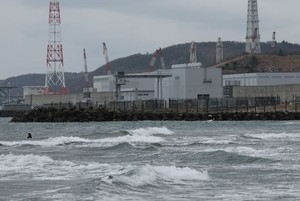By YASUAKI OSHIKA/ Senior Staff Writer
August 24, 2024 at 07:00 JST
NAGASAKI--The Catholic Church in Japan is supporting efforts to bring a celebrated set of paintings from the Vatican for the Osaka-Kansai Expo 2025.
The "Twenty-six Martyrs of Japan" are works by Christian artist Seikyo Okayama (1895-1977). They show a group of Christians crucified in Nagasaki in 1597.
"Christian persecutions in the form of martyrdom teaches us the preciousness of life and the importance of the human dignity," said Japanese Cardinal Manyo Maeda, 75, who is heading negotiations with the Vatican. "It is akin to modern times, when we have many wars going on."
The paintings are held in the Vatican collections. They are poignant reminders of the period when Japan imposed near-total repression of a faith it considered foreign and suspicious.
If the paintings travel to Japan, it will be their first appearance there in nearly a century.
Baptized a Christian, Okayama was from Hiroshima. He graduated from the institution that became the Kyoto City University of Arts and was a student of Seiho Takeuchi, who pioneered modern Japanese style in fine art.
Okayama became a devotee of Japanese Christian martyrs in his student days.
He later took a job as an art teacher at Nakatsu Girls' High School in Oita Prefecture so that he could travel into Nagasaki to collect materials about the martyrs and search for publications.

It took Okayama 15 years to complete the 26 portraits. He used ground mineral pigments on silk.
Each work is nearly life-size, measuring 1.99 meters by 0.76 meters.
The Twenty-six Martyrs were missionaries and other Christians who were executed by the order of warlord Toyotomi Hideyoshi. They were canonized by the pope in 1862.
Nagasaki's Nishizaka district is home to a museum that honors the victims, the Twenty-Six Martyrs Museum.
Okayama displayed his works in a solo exhibition in Tokyo's Ginza district, after which he donated the portraits to Pope Pius XI in 1931. At the time of the donation, the portraits were featured in newspapers and the weekly Shukan Asahi magazine, but then they faded into memory.
The artworks regained recognition after replicas went on display at the Urakami Christian Museum in 2019 and again in 2020.

Director Chiyoko Iwanami, 76, thought it was a waste for the brilliant paintings to sit on a shelf at the Vatican Museums. It made her think about a homecoming exhibition in Japan.
But on a visit to Italy she was disappointed to find the paintings badly damaged with the pigment falling off.
The damage appeared to have been caused by the paintings being stored rolled up like Japanese scrolls. The difference in humidity between Japan and Italy may also have had an effect.
FUND-RAISING EFFORTS
Nine of the 26 portraits were restored by a Japanese expert in 1999, but the rest were left untouched.
In April, Iwanami set up a fund to bring the artworks home, restore them and put them on show. The fund needs 30 million yen ($198,000) in donations.
The body is headed by Maeda, the cardinal, who has been in talks with the Vatican on bringing over some of the portraits.
Maeda said he has informal consent to display 12 portraits during the expo, including the nine pieces previously restored and three pieces

repaired by the Vatican.
He intends to showcase the portraits at Japan's pavilion, as well as at the Catholic Tamatsukuri Church and the Catholic Osaka Umeda Church in Osaka, and in Nagasaki.
He also aims to show the missing paintings in the form of replicas, so that all 26 images are displayed together.
Maeda will visit the Vatican in October to sign the final agreement, which will cover details such as the period of loan and who covers the costs.
The association is also considering bringing the unrestored portraits back to Japan to have them repaired by Japanese experts.
Meanwhile, one person who looks forward to the images going on display is Chikako Kinoshita, 54, Okayama's great-granddaughter.
She remembers being with the painter on his deathbed. She held his hand as he breathed his last breath.
"It feels like as if I were led by many miracles," Kinoshita said.




















A peek through the music industry’s curtain at the producers who harnessed social media to help their idols go global.
A series based on diplomatic documents declassified by Japan’s Foreign Ministry
Here is a collection of first-hand accounts by “hibakusha” atomic bomb survivors.
Cooking experts, chefs and others involved in the field of food introduce their special recipes intertwined with their paths in life.
A series about Japanese-Americans and their memories of World War II